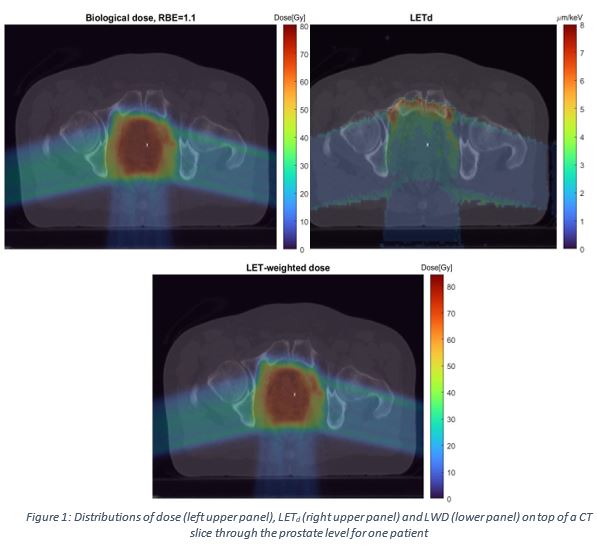Variable RBE for a proton therapy class solution in a randomised trial for high-risk prostate cancer
Rasmus Klitgaard,
Denmark
PD-0729
Abstract
Variable RBE for a proton therapy class solution in a randomised trial for high-risk prostate cancer
Authors: Kristin Lie Aas1, Rasmus Klitgaard1, Anne Vestergaard1, Heidi S. Rønde1, Sofie Tilbæk1, Liliana Stolarczyk1, Tanja Stagaard Johansen1, Stine E. Petersen1, Lise Bentzen2, Ludvig P Muren1
1Department of Clinical Medicine, Aarhus University, Danish Center for Particle Therapy, Aarhus University Hospital, Aarhus, Denmark; 2Department of Clinical Medicine, Aarhus University, Department of Oncology, Aarhus University Hospital, Aarhus, Denmark
Show Affiliations
Hide Affiliations
Purpose or Objective
Pelvic
lymph node irradiation is recommended in patients with high-risk prostate
cancer. Due to the large treatment volumes, these patients could benefit from the
normal tissue sparing that might be achieved with proton therapy. However, the influence
of the proton relative biological effectiveness (RBE) on normal tissue doses for
this treatment site has not previously been studied. We are launching a
multi-centre randomised clinical trial to compare front-line photon-based
radiotherapy with pencil-beam scanning (PBS) proton therapy for high-risk
prostate cancer. The aim of this study was to explore the implications of potentially
variable RBE for the proton therapy class solution that will be used in the
trial.
Material and Methods
The
proton therapy class solution consisted of four PBS beams, including two
lateral beams tilted slightly posterior to avoid the femoral heads (gantry
angles 100°/260°) and two posterior beams angled slightly laterally to avoid
the rectum (gantry angles of 170°/190°). The two nearly lateral beams covered
the high-dose target volume and in addition the lymph nodes on either side. The
two nearly posterior beams covered the entire target with prostate, seminal
vesicles and lymph nodes on both sides. Treatment planning of eight test cases was
done in Eclipse, while dose and linear-energy transfer (LET) distributions were
re-calculated using Monte Carlo simulations
(TOPAS v3.5/Geant4 v.10.6) for our beamline (Fig. 1). Biological doses
with published variable RBE models (Carabe, Wedenberg, McNamara) as well as the
LET-weighted dose (LWD) (Fig. 1c) were compared to the clinically applied
constant RBE (RBE=1.1). The analysis focused on the bowel, bladder and rectum,
also taking the uncertainty in the model input parameter α/β
into account (±2 Gy around the point estimates). The differences between
different RBE models and between different α/β values were assessed at dose
levels corresponding to the dose/volume constraints of the trial.

Results
With
both LWD and even more so with the LET-based variable RBE models, the
biological doses in the bowel, bladder and rectum increased compared to
constant RBE (Fig. 2a). The Wedenberg and Carabe RBE models resulted in the
highest doses. At the dose levels of the normal tissue constraints, volume
increases of 0.3-8% were seen, largest for the bowel. For each of the three RBE
models, lowering the α/β increased the biological doses, with the
effect being in the same range as the differences between the models (Fig 2b).

Conclusion
Accounting
for the potentially variable RBE in proton therapy of high-risk prostate cancer
resulted in increases in relative volumes of up to 8% at the dose levels corresponding
to the trial dose/volume constraints. The choice of model and the choice of input
parameter had similar effects. The biological doses obtained with the LWD were
closest to the constant RBE. Biological doses including variable RBE will be
assessed prospectively in our trial.